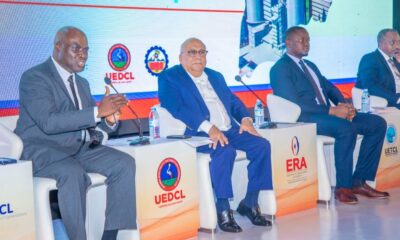Business
Hima owners in merger to form World’s dominant cement firm

Global Giant. LafergeHolcim has been born
According to the BBC, under the terms of the deal, Lafarge shareholders will receive one Holcim share for each Lafarge share they own.
The two firms said they would sell some assets to ease competition concerns.
The deal may help the firms cope with higher energy prices and weaker demand that have hurt the sector since the financial crisis.
The new company will be worth about £33bn based on Friday’s closing share prices.
Although the firms have overlapping operations in Europe, Lafarge is strong in Africa and the Middle East, whereas Holcim is almost absent in these regions.
Meanwhile, Holcim is strong in Latin America, where Lafarge is not established.
The companies added they forecast total annual savings from joining forces of 1.4bn euros.
“The new group will offer higher growth and low risk, thus creating more value,” said Lafarge chief executive, Bruno Lafont, who will become chief of LafargeHolcim.
The deal extends a decadelong trend of increased globalization in the cement market, which is fragmented at the global level but can be highly concentrated in local markets. Other big international deals that have stretched the reach of cement makers include HeidelbergCement’s purchase of Hanson PLC and Mexico’s Cemex SAB buying Australia’s Rinker Group Ltd.
Cheap to manufacture but expensive to transport, cement has long been a local business. For example, Beijing-based China National Building Materials Group Corp., the world’s biggest cement maker by capacity, dominates the Chinese market but has only 6.5% of global cement production capacity, the most of any manufacturer, according to data from International Cement Review.
That has prompted many cement companies—Holcim and Lafarge included—to expand into foreign markets, particularly in developing economies, as they seek growth. Holcim and Lafarge have both bought stakes in local manufacturers and built their own production facilities, particularly in Eastern Europe, the Middle East and India.
Lafarge Chief Executive Bruno Lafont, who will lead the new company, acknowledged the regulatory hurdles would be high and indicated the companies would work with regulators to win approval. The companies have given themselves more than a year to iron out the details, saying the deal likely wouldn’t close until the first half of 2015.
Roughly two thirds of the asset sales are expected to be in Europe.
Comments


















